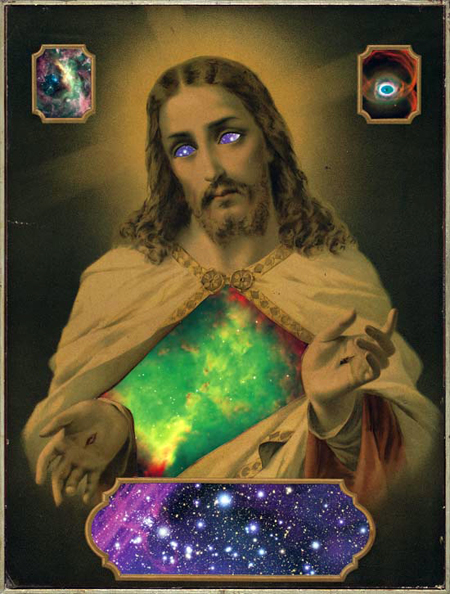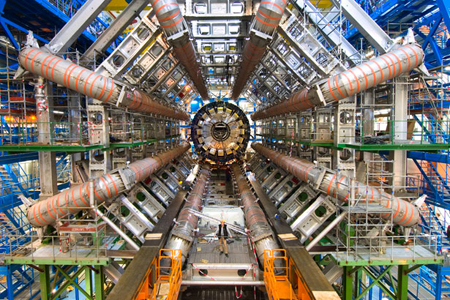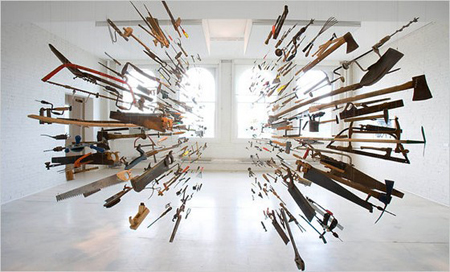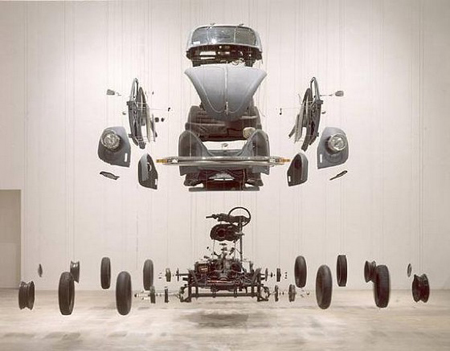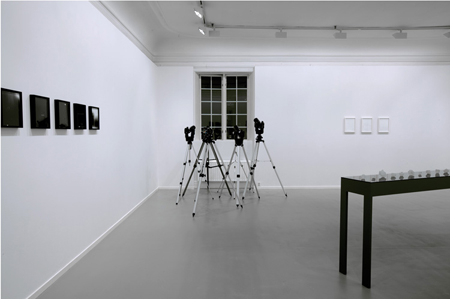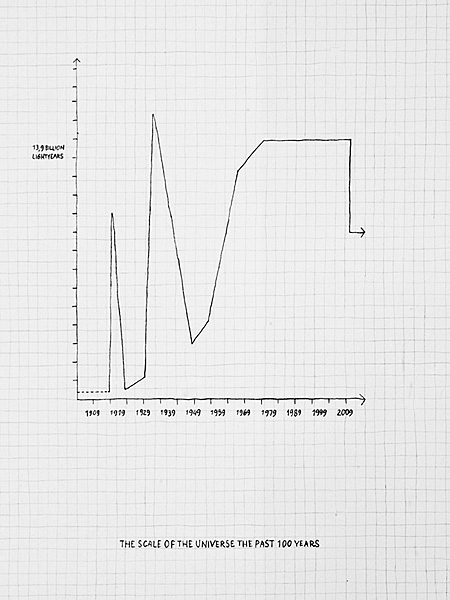The God Particle
oktober 17th, 2010Alexandra Mir
The Dream and the Promise, 2009
‘Infinite space within an infinite nothingness. Undefinable spirit within unlimited thought. Icons and insatiable quests. Human curiosity has a need for a context within which to exist. Religion was science as science is now religion. The justification of our lust and thrust for the infinite, away from our sensory paradise, comparable to the search for the deepest recesses of our minds, are both ways of seeking the answers to creation, purpose and demise. Religion, as a system of control, has come close to its great rival throughout history – the laws of physics that govern our universe. ‘When will miracles cease?’ – The modes of technology that we produce are ingenious to the children of earth but woefully inadequate adaptations of our unlimited imagination. ‘Why are we here?’ – Spiritual answers are equally unsatisfactory compared to the power of such simple questions. The answer may lie in convergence. Technology may have to wait for the power of the human brain to fully develop its (super)natural abilities. Will the technologies that are then produced be miraculous in that they may not require material substance to work but a faith, a belief in laws of physics so subtle than matter itself cannot withstand their logic? Will they be based in technology so discreet that it will be indistinguishable from the very fabric of the universe and all that is created within it? When we look at science and religion, are we looking at the same technology at different levels of evolution? Is humankind always to be polarised and thus paralysed?’ – Mark Baker –
The Large Hedron Collider
Photo: Maximilien Brice, CERN
If you were to dig a hole 300 feet straight down from the center of the charming French village of Crozet, you’d pop into a setting that calls to mind the subterranean lair of one of those James Bond villains. A garishly lit tunnel ten feet in diameter curves away into the distance, interrupted every few miles by lofty chambers crammed with heavy steel structures, cables, pipes, wires, magnets, tubes, shafts, catwalks, and enigmatic gizmos.
This technological netherworld is one very big scientific instrument, specifically, a particle accelerator-an atomic peashooter more powerful than any ever built. It’s called the Large Hadron Collider, and its purpose is simple but ambitious: to crack the code of the physical world; to figure out what the universe is made of; in other words, to get to the very bottom of things.
There’s one puzzle piece in particular that physicists hope to pick out of the debris from the LHC’s high-energy collisions. Some call it the God particle.
The preferred name for the God particle among physicists is the Higgs boson, or the Higgs particle, or simply the Higgs, in honor of the University of Edinburgh physicist Peter Higgs, who proposed its existence more than 40 years ago. Most physicists believe that there must be a Higgs field that pervades all space; the Higgs particle would be the carrier of the field and would interact with other particles, sort of the way a Jedi knight in Star Wars is the carrier of the “force.” The Higgs is a crucial part of the standard model of particle physics—but no one’s ever found it. – Joel Achenbach –
